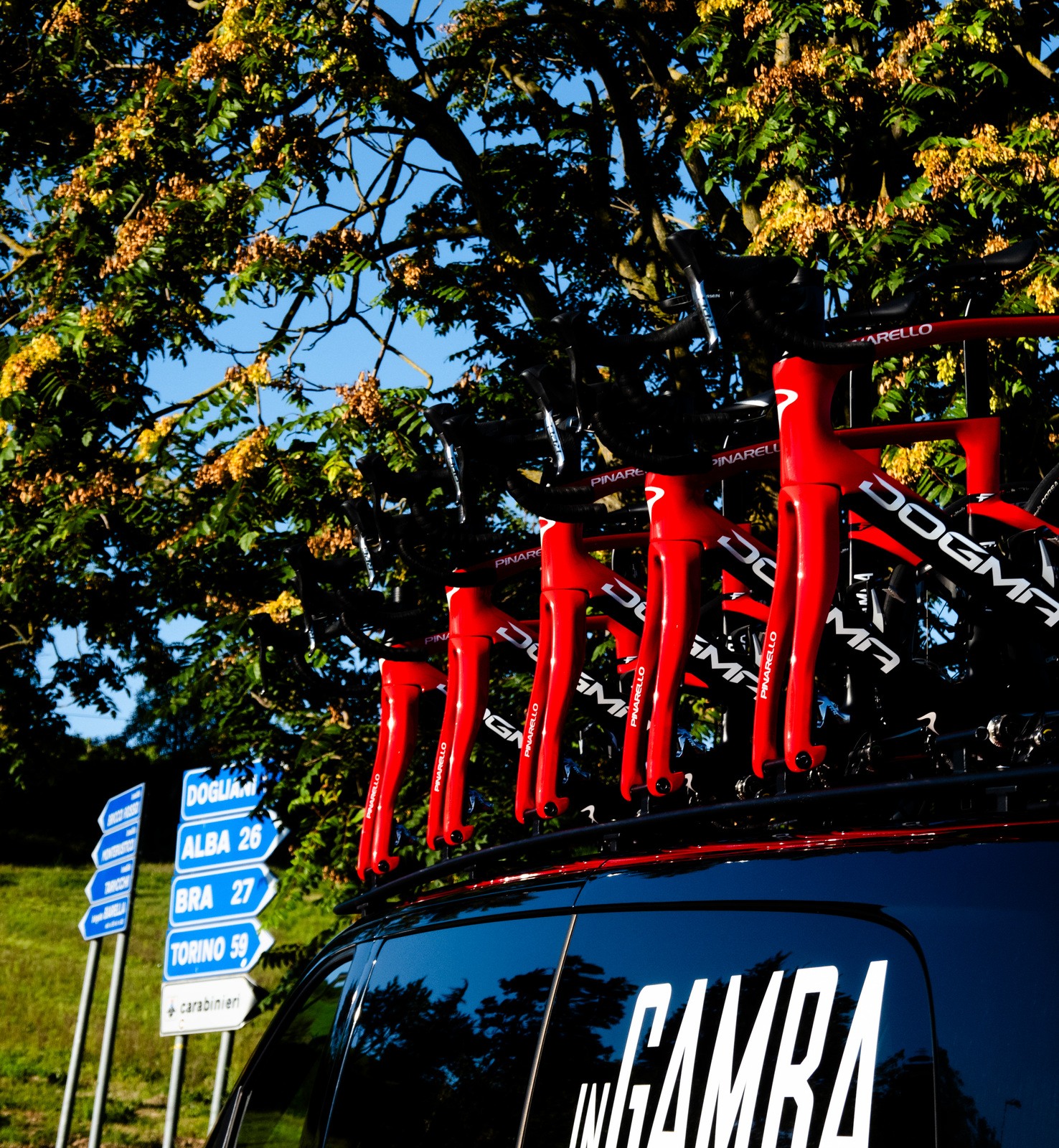Strength training doesn’t have to mean long hours in the gym doing heavy deadlifts and bench pressing your body weight. Instead, most cyclists can see big gains in overall strength and power by spending just a few minutes per day or a couple of 20-minute sessions per week at home, doing simple strength training moves with body weight or with weights they already have on hand.
Here, we’re looking at three simple moves that can be turned into a basic circuit routine that you can do anywhere. You’ll not only get strong for everyday life, you’ll likely notice on bike improvements as well: While riding does help build strong lower body musculature, spending some time on upper body and core as well as your lower half will help you be more stable and save more energy on the bike so you can put out power when you really need it.

These are simple strength-based movements that you likely already know how to do. And they’re time and space friendly, so whether you’re sneaking in squats in the office between meetings or doing a quick strength set in your apartment, you won’t hit a wall. These three simple movements are relatively easy to learn and execute anywhere, but will lead to big gains. Over time, you can experiment with other routines and workouts, of course, but these will get you started and help you dial in that routine of doing strength training regularly.
Planks
The go-to move for strengthening your core while also getting in some glute and upper body work, planks are an ideal movement for a cyclist who’s trying to speed through strength training. They’re also a great precursor to pushups, especially if you find pushups to be difficult—and planks help you stay balanced and strong on the bike. The movement is easy, simply start in a high pushup position, and hold it there. Focus on keeping a straight line from the back of your head to your heels. At first, you may only be able to hold this position for a few seconds, but regular repetition will lead to fast improvements.
Goblet squats
You don’t need to hit a gym to use the squat rack to get benefits from doing squats as a cyclist. Your quads, hamstrings and glutes will thank you on your next climb, even if you do a lightweight series of bodyweight squats, or squat holding a gallon jug of water or a dumbbell you have on hand. Squats are a simple motion starting from standing, feet hip width apart. Hold a dumbbell with both hands close to your chest—start with a light weight, and you can slowly work your way to heavier weights if desired. Slowly start to lower down by bending your knees, pushing your knees out and hips back, and go as low to the ground as you can without straining yourself or losing balance. (If you’re new to squats, put a chair behind you and only go low enough to touch the chair with your bum before going back up to standing.)

Push-Up
While push-ups can be a challenge for cyclists, they’re a good goal. Not only do they work your upper body and core, they help to ‘reverse’ some of the hunching position that we tend to naturally do on the bike. Pushups strengthen your shoulders and help you avoid putting a lot of pressure on your hands on the bike. Focus on keeping your core and glutes engaged and your body in a strong line from the back of your head down to your heels. Take your time lowering down close to the ground, and take your time coming back up as well—it’s better to do one solid pushup than five sloppy ones. (And it’s safer, too!)
If you can’t do a pushup yet, raise your arms rather than dropping to your knees. You can start by doing pushups pressing your hands against a wall, or using a box or chair for your hands—this will help you focus on your form and grow strength faster than pushups done on your knees.
Put it all together
There are hundreds of great strength training videos and articles for cyclists out there that you can stream or read if you’re interested in going deeper on this topic. But we know that most cyclists prefer spending their time on the bike, not strength training, and because of that, keep it as simple and basic as possible. You’re more likely to make time for a short routine that stays the same, so you aren’t constantly trying to find the right weights or learn new movements.
Warm up with either a short walk, or do your strength after your (easier/shorter) rides. Aim to spend 30 seconds on each movement (which may look like two sets of 10 second planks with a 10 second break in between). You can do one quick set that only takes five minutes, or challenge yourself to take a break for a minute (or two if needed) in between and repeat for several rounds. If you’re new to strength training, though, take it slow. Start with a single set and don’t race through your squats and pushups to max out your number of reps, take your time.
This is also a great time to work in any exercises that have been recommended to you by a physical therapist or your coach. You can use these mobility movements or a short yoga flow as a warmup. (And it goes without saying, check with a doctor/your coach before embarking on a strength training regimen.)














